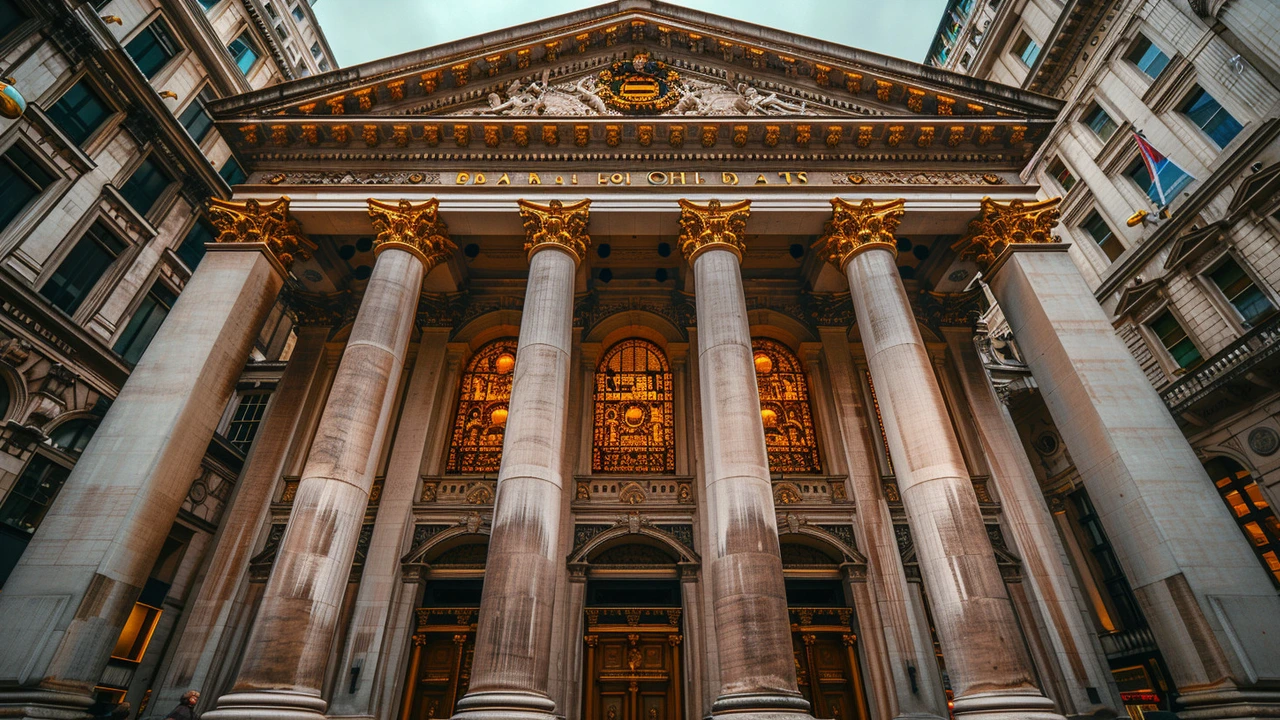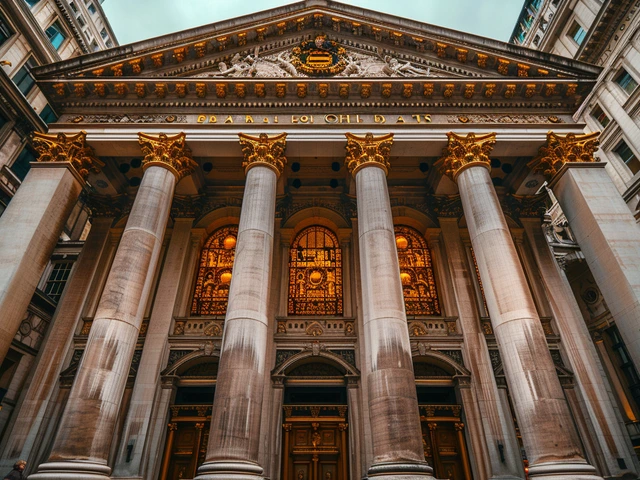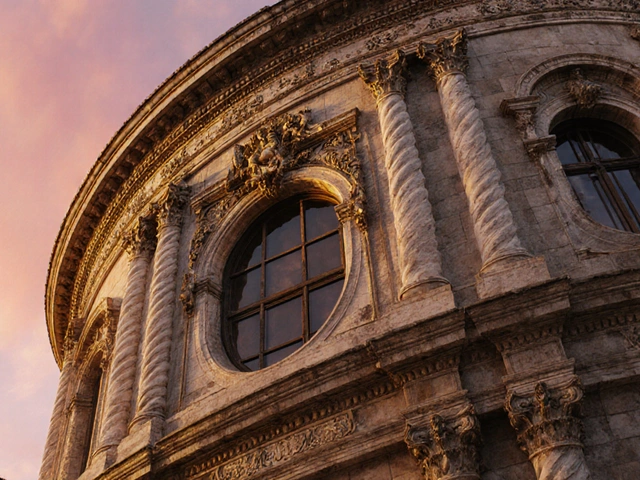Baroque architecture, with its lavish details and grandiose forms, transcends mere building design. It carries with it a slice of history, a piece of culture, and a burst of artistic expression that has stood the test of time. While some might see Baroque structures as relics of the past, their influence continues to ripple through the corridors of modern architecture.
What is it about Baroque architecture that makes it so compelling today? To truly understand, let’s dive into its core attributes, historical context, and the way it seamlessly blends with today's architectural practices. In this exploration, you'll discover how the ornate beauty of Baroque architecture is more than skin deep, embodying a historical narrative and artistic grandeur that still holds sway in our contemporary world.
- The Essence of Baroque Architecture
- Historical Significance
- Cultural Influence
- Modern Adaptations and Inspirations
- Preservation and Restoration
The Essence of Baroque Architecture
Baroque architecture, emerging in Italy during the late 16th century and spreading across Europe, is renowned for its dramatic style and elaborate details. This architectural genre is characterized by its grandeur, ornamentation, and a sense of movement within its structures. Unlike the restrained elegance of the Renaissance, Baroque architecture embraces an exuberance reminiscent of the theatrical and the spectacular. Buildings of this style often feature intricate carvings, bold use of colors, and a blend of different art forms like sculpture and painting integrated into the architecture itself.
The sense of drama in Baroque architecture often manifests through elements such as large-scale ceiling frescoes, twisting columns, and colossal facades. A prime example is St. Peter’s Basilica in Vatican City, where the grandiosity of the dome and rich decorations exude an overwhelming sense of divine authority and magnificence. The use of chiaroscuro, a technique that plays with light and shadows, adds an illusion of depth and movement, making the structures visually dynamic and engaging.
One can’t speak of Baroque architecture without mentioning the sense of unity it creates. Unlike many other architectural styles, Baroque strives to create a cohesive visual experience, where each element contributes to the overall aesthetic and emotional impact. This can be seen in the Palace of Versailles in France. Every room, garden, and corridor is intricately designed to complement one another, creating an environment of continuous opulence and splendor.
Key Features of Baroque Architecture
Several features define Baroque architecture:
- Ornamentation: Ornate details and decorations are abundant, from sculpted angels to elaborate friezes.
- Grandeur: Large-scale structures with a striking visual impact.
- Movement: Dynamic forms and curves create a sense of motion and bring the buildings to life.
- Integration of Art: Fusion of architecture, sculpture, and painting to create a unified artistic experience.
- Light and Shadow: Chiaroscuro technique for dramatic lighting effects.
Additionally, Baroque architecture often includes the use of dramatic staircases, large plazas, and elaborate fountains, enhancing the overall majestic feel. Buildings designed with Baroque elements often aimed to impress and inspire awe, a deliberate move by patrons who were frequently the church or the state, aiming to display power and divinity.
Baroque architecture does not provoke ideas; it inspires feelings. – Ada Louise Huxtable
This quote encapsulates the essence of Baroque architecture perfectly. Rather than appealing solely to the intellect, Baroque structures aim to evoke emotional responses through their dramatic and lavish designs. The grandeur of Baroque architecture isn't just about size or richness; it's about creating a powerful sensory experience that leaves a lasting impression.
Understanding the essence of Baroque architecture allows us to appreciate how its principles continue to influence modern design. Architects today still draw inspiration from its dynamic forms, rich ornamentation, and grandiose spaces, showing that while styles may evolve, the emotional power of Baroque architecture endures.
Historical Significance
Baroque architecture isn't just a style of building; it’s a lens through which we can view the changing tides of history. Emerging in the late 16th century in Italy, this architectural style was initially propelled by the Catholic Church as part of the Counter-Reformation movement. The Church aimed to communicate its power and devoutness through dramatic, awe-inspiring structures. This was a period of intense religious conflict and the grandeur of Baroque architecture was used as a tool to invoke spiritual reverence and awe in the faithful, reaffirming the Church’s influence.
As Baroque architecture spread across Europe in the 17th and 18th centuries, it adapted to various cultural contexts. Each region added its local flavor to the Baroque style, resulting in a fascinating diversity of structures. For example, the opulent palaces and churches in France and Germany became symbols of royal power and divine authority. France’s Palace of Versailles, with its magnificent Hall of Mirrors, is a noteworthy example. The elaborate stuccoes, frescoes, and sculptures were crafted by skilled artisans to exhibit the splendor of King Louis XIV's reign. According to art historian Henry A. Millon, “Baroque art, in its complexity and grandeur, reflects the tumultuous yet progressive age in which it was born.”
Moreover, Baroque architecture wasn't confined to Europe alone. The Spanish and Portuguese missionaries transported this style to Latin America, where it merged with indigenous motifs, resulting in unique hybrids that still stand today. The Cathedral of Zacatecas in Mexico and the São Francisco Church in Salvador, Brazil, showcase the distinctive Latin American Baroque. These buildings are not just places of worship; they encapsulate centuries of cultural exchange and adaptation, providing valuable insights into the historical narratives of colonization and local resilience.
The historical significance of Baroque architecture goes beyond its association with power and religion. It also represents a major evolutionary step in architectural design. The use of bold contrasts, complex geometrical shapes, and the integration of sculpture and painting into the architecture marked a departure from the more restrained Renaissance styles. The architects of this era, such as Gian Lorenzo Bernini and Francesco Borromini, were pioneers of their time. They introduced innovative structural elements like the oval plan and the broken pediment, which became hallmarks of Baroque design.
Incorporating these intricate details into their works, they managed to create an experience rather than just a building. When one steps into Rome's St. Peter's Basilica, designed in part by Bernini, the soaring columns, expansive domes, and intricate artwork collectively generate a feeling of sublime awe—a testament to the emotive power of Baroque architecture. These buildings invite not just admiration but also contemplation, standing as enduring symbols of an era that blended spiritual fervor with artistic ambition.
Baroque architecture’s historical significance is also reflected in its lasting impact on later styles and movements. The theatricality and emotional intensity of Baroque had a profound influence on the Rococo movement that followed, and many principles of Baroque design can be seen echoed in the neoclassical and even modern architecture. Its techniques, particularly the dramatic use of light and shadow known as chiaroscuro, have transcended architecture to influence painting, theater, and cinema, showcasing its broad and enduring legacy.
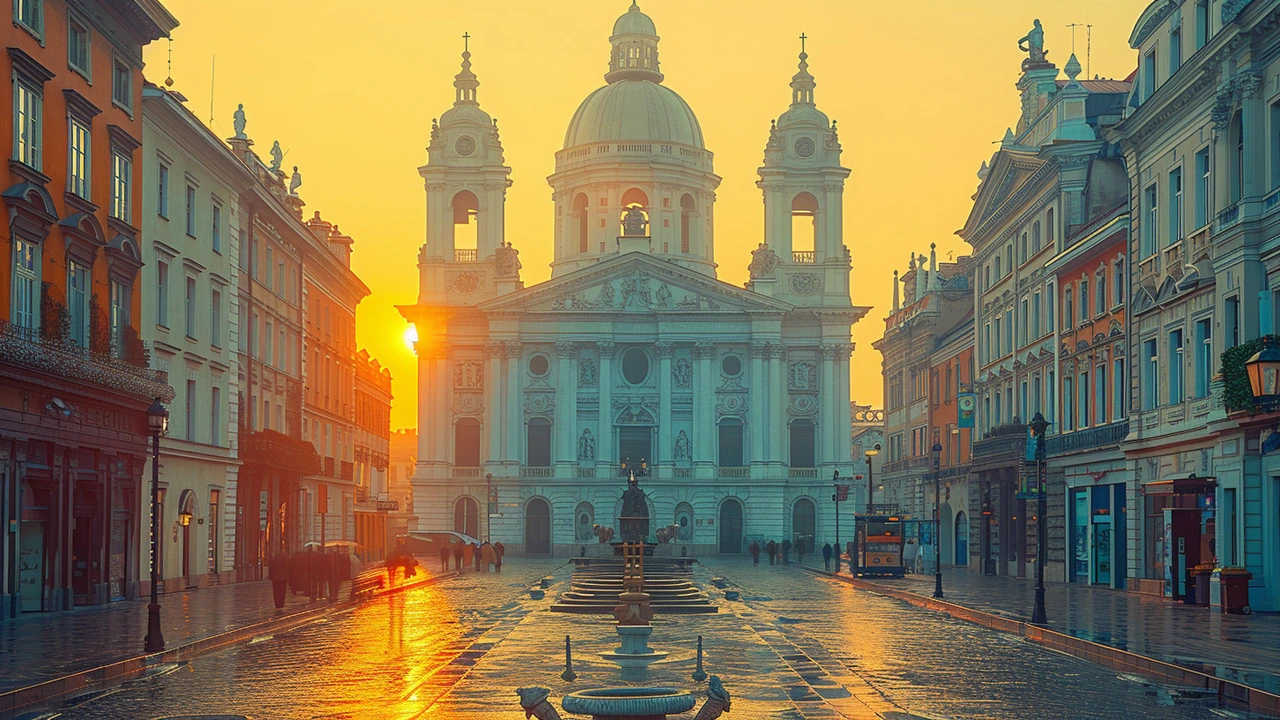
Cultural Influence
Baroque architecture does more than captivate the eye with its elaborate details and opulent forms; it acts as a cultural beacon, reflecting the ethos of the time in which it was created. The Baroque period, spanning roughly from the late 16th century to the early 18th century, was characterized by dramatic artistic expressions, driven by the Catholic Church's desire to evoke emotional responses and reaffirm its dominance during the Counter-Reformation. This intent is evident in the grand churches and cathedrals, which were designed to inspire awe and reverence.
The cultural milieu that fostered Baroque architecture was one of grandiosity and expressiveness. Artists and architects like Gian Lorenzo Bernini and Francesco Borromini weren't just building structures; they were crafting experiences. This cultural backdrop has permeated through the centuries, influencing contemporary architectural styles and cultural expressions. Today, visiting a Baroque church or palace can feel like stepping into a vibrant tapestry of history, where art and architecture blend seamlessly to tell a grand story.
Baroque architecture's cultural influence isn't confined to Europe. Its reach extended globally, taking root in places like Latin America, where Spanish colonizers built Baroque churches and civic buildings. These structures often included native artistic elements, resulting in a unique blend of European and indigenous styles. One notable example of this cultural intermingling is the Church of São Francisco in Salvador, Brazil, a masterpiece of Brazilian Baroque architecture that fuses Portuguese designs with local influences.
Baroque architecture also modeled how public spaces could be artfully organized, leading to a deeper appreciation for communal areas and urban planning. The grand plazas and public squares designed during the Baroque era provided more than just functional spaces; they became central to social life, public discourse, and civic pride. Modern urban design often echoes these principles, emphasizing the importance of aesthetically pleasing and emotionally engaging public spaces.
Another crucial aspect of Baroque architecture's cultural influence is its role in theatre and performance art. The dramatic elements seen in Baroque structures, with their dynamic forms and intricate details, parallel the theatrical innovations of the same period. Opera houses built in the Baroque style, such as the Teatro di San Carlo in Naples, are not just venues for performances but embodiments of the cultural and artistic ambitions of the time. This legacy continues today, as many modern theatres and opera houses draw inspiration from Baroque designs to create spaces that enhance the audience’s experience.
"Baroque architecture reflects the spirit of its age – a time of dynamism, exploration, and grandiose visions," noted the art historian Rudolf Wittkower. This observation underscores the enduring cultural significance of Baroque architecture. It’s an architectural style that doesn’t merely house people or objects but serves as a cultural narrative that continues to speak to us across the ages.
The importance of maintaining and preserving Baroque buildings lies in their cultural narrative and the lessons they impart about human history and societal values. These structures are living museums, offering insights into the religious, social, and political fabrics of their times. Efforts to preserve them, therefore, are not just about maintaining historical artefacts but about keeping alive the stories and cultural dialogues they represent. Preservation initiatives across the globe, from the restoration of St. Peter’s Basilica in Vatican City to smaller local efforts in towns and cities, underline the universal appreciation for this grandiose style.
Modern Adaptations and Inspirations
Baroque architecture, with its signature ornate details, has found a unique position in modern design. Its influence can be seen in various contemporary buildings, where architects integrate Baroque elements to create spaces that exude elegance and grandeur. Modern architects often borrow from the Baroque's playbook, incorporating lavish decorations, sweeping curves, and grandiose forms to craft buildings that stand out in urban landscapes.
One way Baroque architecture influences modern structures is through the use of dramatic entrances and facades. These grand entrances often feature intricate moldings, richly detailed columns, and elaborate sculptures. Such elements aim to give modern buildings a timeless appeal, inviting admiration and appreciation from viewers. The Apple Store on Regent Street in London, for example, showcases a blend of modern design with Baroque-inspired details, making it an iconic architectural piece.
Interior design, too, feels the Baroque touch. High ceilings, vast open spaces, and ornate detailing on walls and ceilings are features that modern luxury homes and commercial spaces adopt to create an ambiance of opulence. Chandeliers reminiscent of Baroque palaces, with their cascading crystals and intricate designs, are a popular choice in contemporary interior spaces, blending old-world charm with new-world technology.
The marriage of Baroque architecture and modern design isn't merely about aesthetics. It's also about invoking a sense of place and history. Incorporating Baroque elements can make a new construction feel rooted and timeless, establishing a continuity that bridges past and present. For instance, the revival of classical elements in residential buildings often leads to a restrained yet impactful blend of styles, offering both historical depth and contemporary functionality.
Public buildings and cultural institutions are also rediscovering Baroque influences. Take the extension of the Museo del Prado in Madrid, where modern additions harmonize with the original architecture, making for a visually cohesive experience. By doing so, designers not only pay homage to historic styles but also educate the public about the lasting impact of Baroque aesthetics.
"Baroque architecture, with its bold gestures and elaborate details, challenges the minimalist tendencies of modern design, offering a rich tapestry of inspiration for contemporary architects." – Architectural Digest
Even in smaller-scale projects, Baroque elements are making a comeback. Boutique hotels, cafes, and even retail shops use Baroque-inspired decor to create unique, memorable spaces. This resurgence speaks to a broader fascination with the past and a desire to blend history with modernity in everyday environments.
The revival of Baroque architecture is a testament to its enduring appeal. As we continue to explore new frontiers in design, the lessons and inspirations drawn from Baroque architecture help us create spaces that are not only functional but also imbued with beauty and history. This harmonious blend ensures that the essence of Baroque continues to enrich modern architecture, making it as relevant today as it was centuries ago.
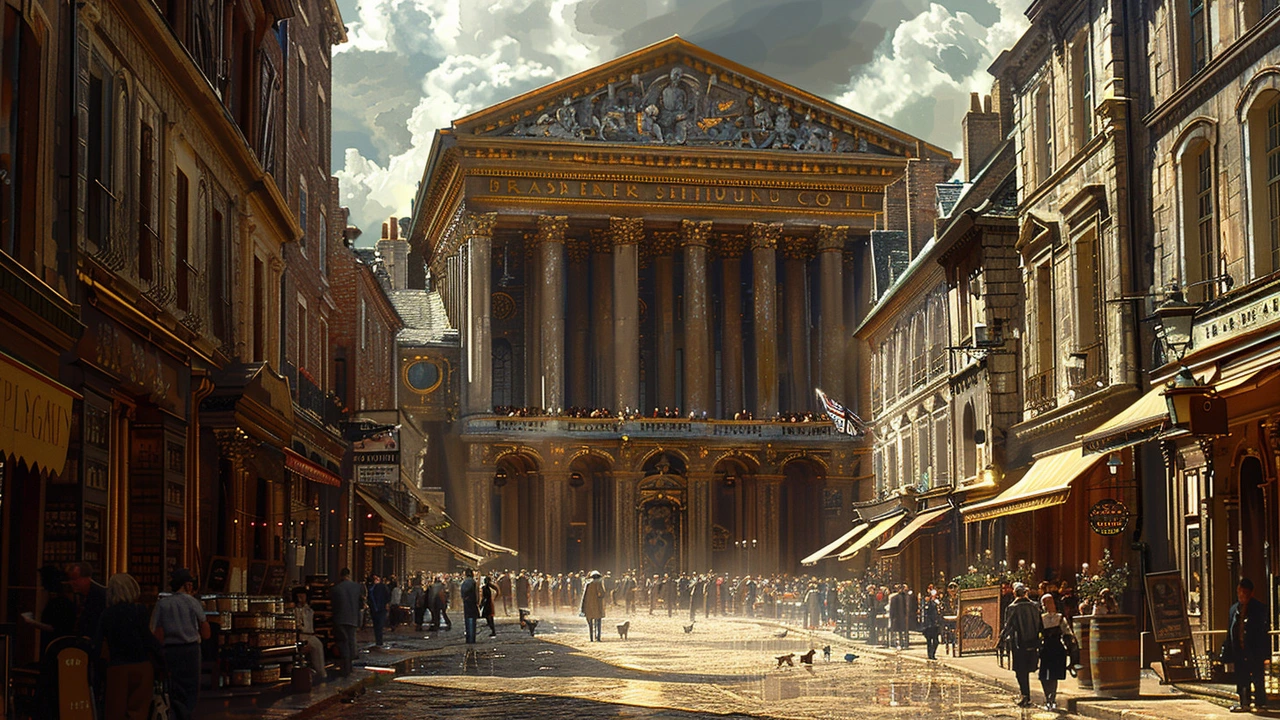
Preservation and Restoration
Preserving Baroque architecture is an intricate process that requires more than just routine maintenance. It's about ensuring that the delicate details and historical significance of these structures are not lost to time. Restoration efforts often involve a multistep approach to carefully address deterioration while respecting the original design and materials. This process can be a labor of love, balancing modern techniques with traditional methods.
For instance, St. Paul's Cathedral in London, one of the most iconic Baroque structures, has undergone several restoration projects. These efforts aim to preserve its majestic dome and elaborate stone carvings. Architects and conservators use a mix of technology and craftsmanship to keep the building looking as it did over 300 years ago. Modern tools like 3D scanning help in accurately assessing damage and planning repairs without compromising the original aesthetic.
Restoration is more than just repairing what is broken. It involves understanding the historical context and cultural significance of the building. The goal is to maintain its architectural integrity while ensuring it can be enjoyed by future generations. This requires a deep knowledge of period-specific construction techniques and materials. For instance, lime-based mortars and period-appropriate pigments are often used in restorative work.
According to the International Council on Monuments and Sites (ICOMOS), “Conservation and restoration of cultural heritage is vital not only to safeguard the past but to inspire the future.” This perspective underscores the dual role that such projects play. They keep history alive while providing a learning resource for modern architects and designers.
Sometimes, the challenge lies in integrating modern amenities without disrupting the historical charm of the building. Whether it’s installing air conditioning or updating electrical systems, these interventions must be done delicately. The goal is to make the space functional for contemporary use, without sacrificing its unique Baroque qualities. Architects often employ hidden infrastructure to maintain the visual integrity of the structure.
The importance of government and private funding in these projects cannot be overstated. Grants and donations help cover the substantial costs of materials and skilled labor required for high-quality restoration. Many Baroque buildings are listed as cultural heritage sites, which affords them certain protections and access to funds aimed at conservation.
Moreover, public education plays a crucial role. Engaging communities in the stories behind these magnificent structures can foster a sense of shared responsibility for their preservation. Educational programs, tours, and interactive exhibits can help the public appreciate the value of these historic buildings, encouraging community support for ongoing preservation efforts.
Preservation and restoration are complex but essential endeavors that ensure Baroque architecture remains a vibrant part of our cultural landscape. These efforts allow us to walk through the same majestic halls and gaze upon the same intricate details that awed generations before us. In doing so, we keep the spirit of the Baroque era alive, safeguarding its beauty and significance for future generations to appreciate and learn from.

